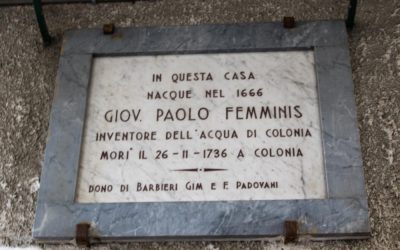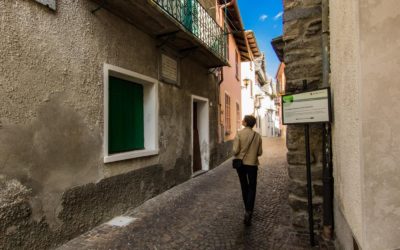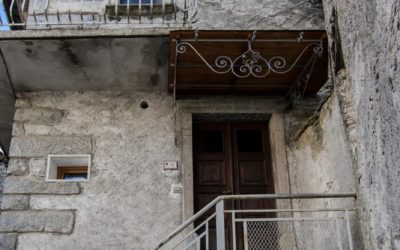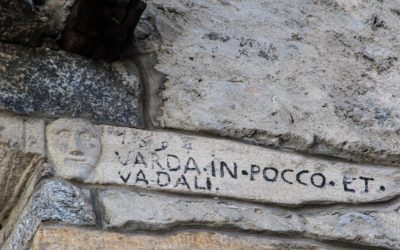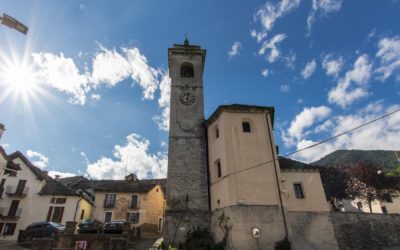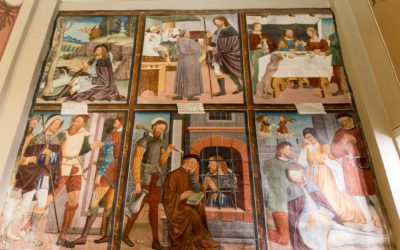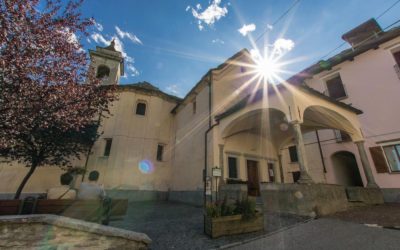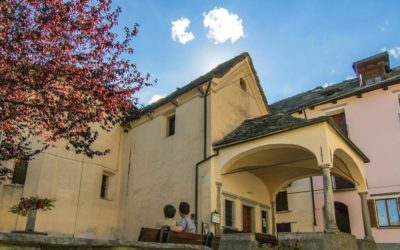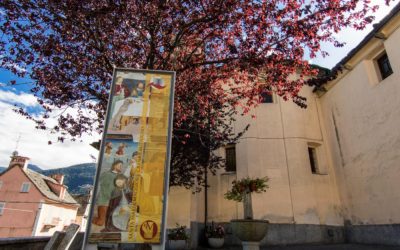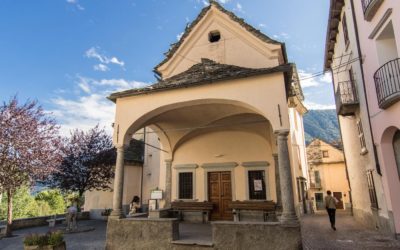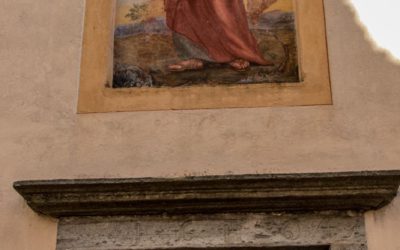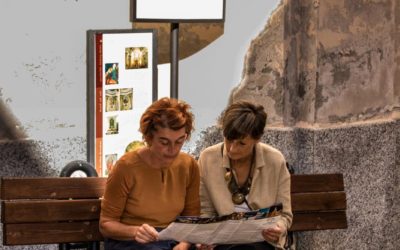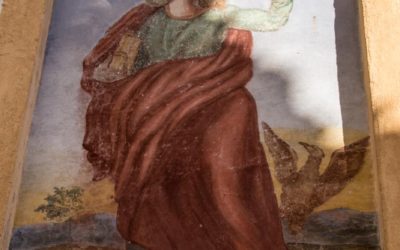Crana is the other hamlet of Santa Maria Maggiore. In its little square you can admire a religious building that consists of two different churches connected one to the other: the Church of Saint John The Evangelist and the little and fascinating Oratory of Saint Roch, decorated with twelve big square frescoes portraying the life of the Saint.
5.
GIOVANNI PAOLO FEMMINIS’ BIRTHPLACE
Giovanni Paolo Femminis emigrated to Cologne (in Germany) where he invented Aqua Mirabilis, a curative essence, whose medicinal properties were certified by the University of Cologne in 1727. It was then merchandised by Giovanni Maria Farina and it became a very renowned perfume, know as Aqua admirabilis – Eau Admirable de Cologne.
Femminis was also a generous benefactor of the churches in Crana and Santa Maria Maggiore and the school of the village.
6.
HOUSE WITH CELTIC MASCARONS
This house shows both rural and refined features: north-south orientation, open gable, an arcade with little columns (on the south façade), stone corbels, decorations and Celtic mascarons near the windows (on the north façade). The rough inscriptions date back to 1694 (on the north façade “varda in poco et va da lì” – Look a little bit and then go forward! , on the south façade “o pensa in pocco a casa tu” – Think about your house!) and they express the owner’s annoyance over the curiosity of the passers-by.
7.
THE TOWNHALL IN CRANA
Crana was once an independent municipality, then in 1845 it became part of the municipality of Santa Maria Maggiore. Before 1555 there was not a town hall in the village; for this reason the so-called “vicinanze” met in the square, in front of the Oratory of Saint Roch. The “vicinanze” were the assemblies of the “vicini”, the inhabitants of the village. They were divided into VOCALI (if they were family men) or NON VOCALI (if they were sons of ancient families).
Then a town hall was built there thanks to the offer of 1000 Lire made by G.P. Femminis and to the work of the inhabitants. They worked for free in turns to fulfil their duty to participate in the community works (per oura).
8.
THE ORATORY OF SAINT ROCH
This religious building was built by the inhabitants of the village in 1534 as a votive offering after the plague that struck the region in 1529-30. It was restored in 1761.
The church was frescoed by Battista da Legnano: twelve big square frescoes portray the episodes of Saint Roch’s life. The frescoes on the right were restored by Luigi Morgari in 1894.
9.
THE ORATORY OF SAINT JOHN THE EVANGELIST
The church was build in 1744, thanks to the financial support of G.P. Femminis (1666-1736). It was frescoed by Giuseppe Mattia Borgnis (1701-1761): on the dome “The Triumph of Saint John” can be admired. This fresco is considered G.M. Borgnis’ masterpiece.
The altarpiece (from the Valsesia painting school) dates back to the half of the 17th century.

